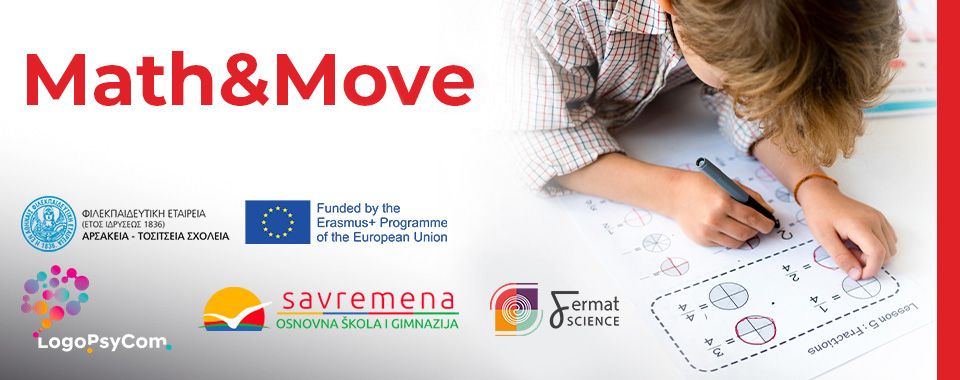Math&Move
From October 2022, Primary School Savremena is part of another Erasmus+ project that won the competition and is funded by the French National Agency. The main goal of the Math&Move project is to increase students' motivation and interest in maths at the age level of primary school students, that is, students aged 6 to 9.
The method that will be applied to involve students in the field of STEM and especially maths is the use of kinesthetic techniques for a better understanding of abstract mathematical concepts through the movements of one's own body and/or body parts (head, feet, hands, etc.).

Maths is most often presented to students as an isolated set of rules and procedures, separated from their real life. The Math&Move project implements innovative methodologies for teaching maths by connecting abstract content with concrete reality through movement. It is recommended that multidisciplinary activities be integrated into the teaching of maths through examples that activate the imagination during acquiring mathematical knowledge. In this way, students will master mathematical concepts and understand them better (Hershkovitz & Winner, 1984).
What is Kinesthetic Learning?
Kinesthetic learning, also known as tactile learning or movement-based learning, involves physical movement in order for students to master new material as easy as possible. These activities include stretching, yoga, dancing, cross-body movements, and cardiovascular exercise. When students use their whole bodies during studying, muscle memory gained from the activity reinforces the neural pathways created during the learning process.
Integrating exercise with learning has a positive effect on cortical mass, blood flow, and delivery of oxygen to the brain. Physical activity also increases the number of synapses formed between neurons in the brain, which in turn improves cognition and memory.
But what makes kinesthetic maths so effective? When students learn maths through movement, games, and activities, they begin solving problems more creatively. The exercise they get from kinesthetic maths games helps them focus their attention on new content and maintain it for a long time. Students with attention deficit hyperactivity disorder (ADHD) learn best kinesthetically, and exercise improves their attention and regulates their mood. When students enjoy learning, maths doesn’t become an obligation – it becomes a fun, interesting subject they’ll love!
Project results
The main results of the Math&Move project are, firstly, a pedagogical framework that will help establish a knowledge base on which the partnership will work throughout the project, and a methodology for teachers and families that will show them how movement and learning maths are connected, as well as ways in which they can implement the project's resources. By the end of the project, an implementation guide will be available that will contain qualitative feedback from the pilot testing phase (from teachers, parents, and students), with recommendations, corrections, and general insight into the project. The e-books will collect movement-related lessons with accompanying stories and together with complementary materials, worksheets, and video recordings as examples.
The multidisciplinary approach of this project will help reach different types of students because it will simultaneously deal with different types of intelligence: visual-spatial, verbal-linguistic, mathematical-logical, and bodily-kinesthetic.
Partners:
NGO Fermat Science, Beaumont de Lomagne, France
Arsakeio Primary School of Patras, Patras, Greece
Primary School Savremena, Belgrade, Serbia






